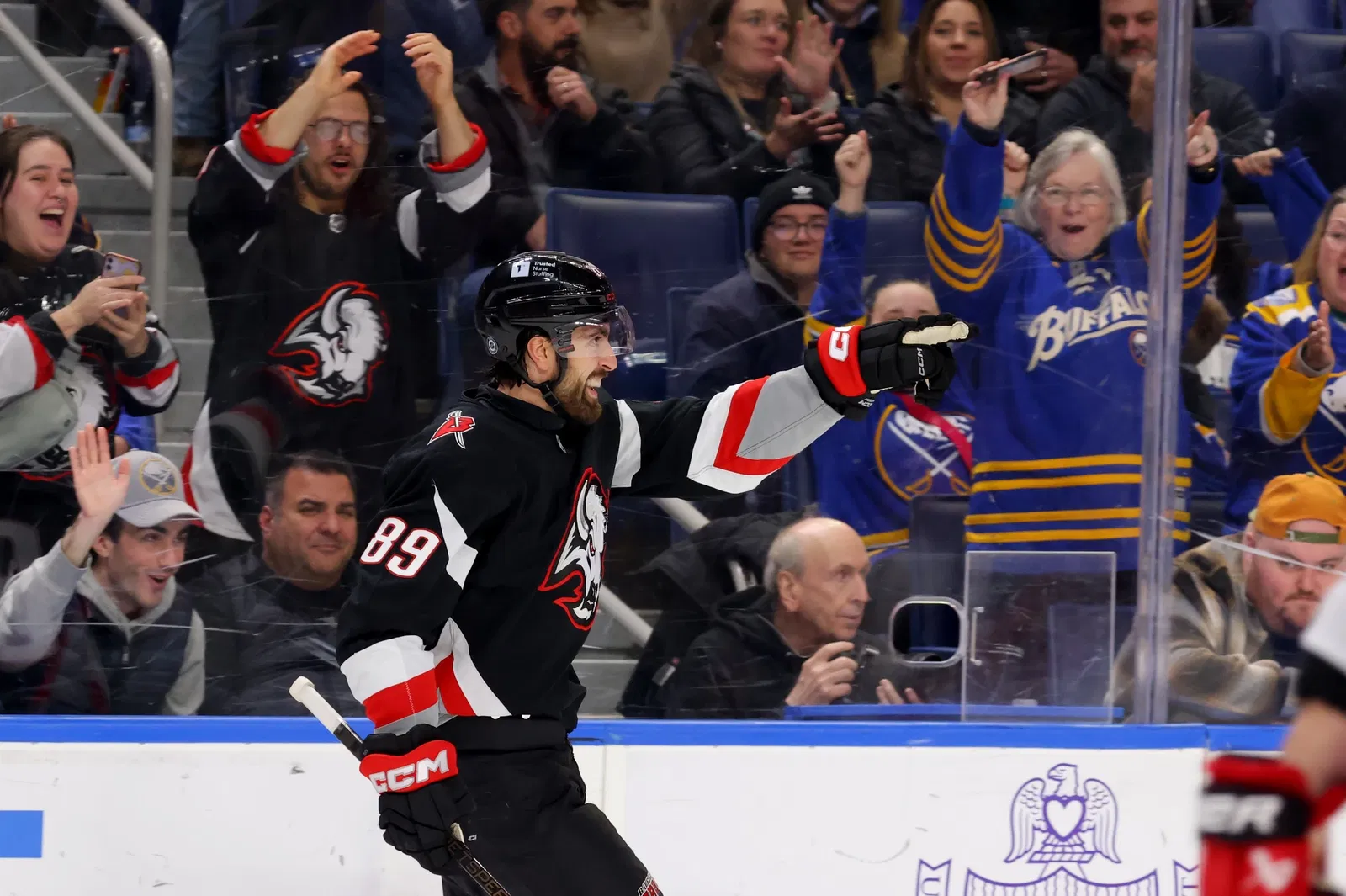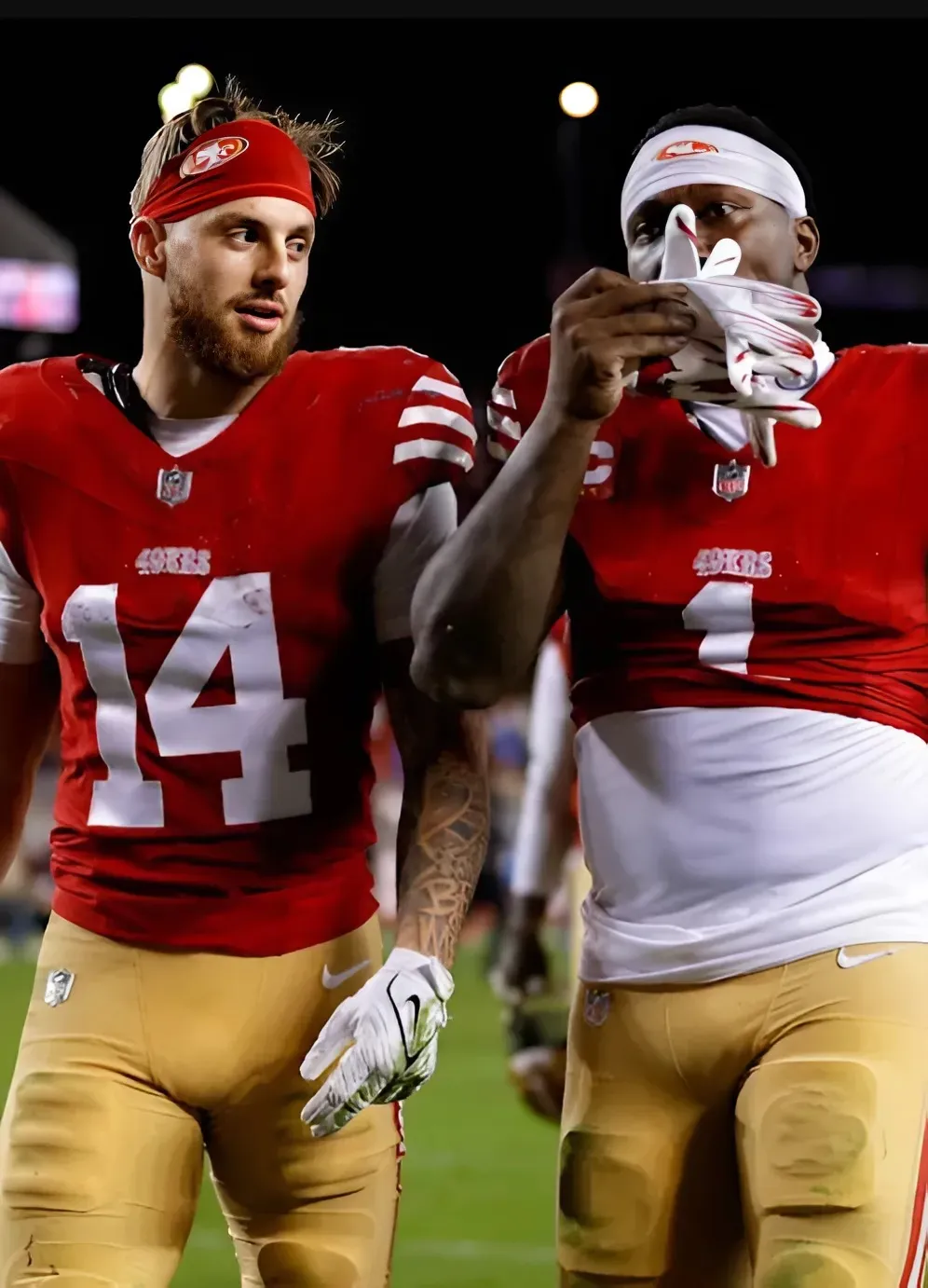
Points per 60 scoring of Marco Rossi and Morgan Frost by age (The Hockey Writers)
The Philadelphia Flyers have three first-round picks in the upcoming 2025 NHL Draft and are center-needy. As a result, the Orange and Black have been in the rumor mill to land 5-foot-9 center Marco Rossi from the Minnesota Wild, who seems to be on the trade block. The 23-year-old is a restricted free agent in the offseason.
A report from Daily Faceoff’s Anthony Di Marco said that the Flyers balked at a cost of either forward Tyson Foerster or one of the team’s two late first-round picks (22nd overall and either 31st or 32nd overall, depending on the result of the Stanley Cup Final). In light of that report, let’s address and refute four misconceptions about the young centerman, just in case Daniel Brière and the Flyers scoop him up.
Misconception One: Rossi Is a Middle-Six Center
Across a full 82-game slate, Rossi recorded 24 goals and 36 assists in 2024–25. At the very least, it seems he has a future as a legitimate second-line center—he’s far from the next Morgan Frost.
Rossi’s Ontario Hockey League (OHL) career was flat-out ridiculous. The season before he was draft-eligible, he had 1.23 points per game. Jett Luchanko, the Flyers’ 13th-overall pick in 2024, had 1.22 points per game in the OHL this past season. The Wild landed an incredible prospect at ninth overall in 2020.
But let’s get back to the NHL. With 2.41 points scored per 60 minutes of ice time, Rossi had a great 2024–25 campaign. In that metric, he finished ahead of Brock Nelson and Sam Bennett, two of the top free-agent centermen available (although Nelson could easily extend). While Nelson didn’t have as much talent next to him, Bennett played full-time with Matthew Tkachuk—that can offset concerns about Rossi’s “reliance” on Kirill Kaprizov, who was injured for a lot of the season, anyway.
Getting away from point-scoring, Rossi was a genuinely important player for the Wild. This past season, here are his on- and off-ice differentials.
| Stat; 5-on-5 | Rossi On-Ice | Rossi Off-Ice |
| Expected Goal Differential | 53.58–47.04 (53.25%) | 100.13–110.61 (47.51%) |
| Goal Differential | 56–43 (56.57%) | 85–105 (44.74%) |
Evidently, the Wild were worse off when Rossi was on the bench. For them, he wasn’t really replaceable in the top six. His point production was solid, and he did a good job of outplaying his opponents.
Misconception Two: A Late First-Round Pick Is Too Much for Rossi
Now, let’s take Di Marco’s report at face value, just for the sake of it. A late first-round pick would be a steal for this kind of player.
Let’s assume that “late first-round pick” refers to the Colorado Avalanche’s selection at 22nd overall, which the Flyers own. From the 2015 to the 2020 class (Rossi’s), just three of the 40 forwards taken from that spot to the end of the first round had a 60-point season, much less as a 23-year-old. That’s 7.5%.

First-round picks are often overestimated, speaking generally. In that range, getting a player who has a season just as good as Rossi’s last is pretty unlikely. If he’s available for the 22nd-overall pick, and that’s it, the Flyers should be more than happy to make the Wild’s wishes come true.
But that begs the question: why would Minnesota consider trading him, especially for such a small price? Certainly, there’s a catch, right?
Misconception Three: Rossi’s Contract Will Be Too Expensive
Being eligible for a big-time contract might do it. Commitment is hard—the Wild may be hesitant to go long-term with Rossi, but that’s likely what he’s demanding. According to David Pagnotta of The Fourth Period, something along the lines of a seven-year, $7 million cap-hit deal could be his cost.
On the surface, that sounds like a lot. But with a rapidly increasing salary cap, it’s not as much as it seems.
To put it in Flyers terms, let’s look at Travis Konecny. He signed a six-year deal worth $5.5 million per season back in the summer of 2019. Signing at the age of 22, this ended up being a bargain for the Orange and Black, despite the salary cap remaining more or less stagnant through the contract’s duration.
But let’s look at percentages. Konecny’s deal was 6.75% of the league’s salary-cap ceiling in 2019–20. Comparatively, a $7 million cap-hit Rossi extension would be 7.33% of the 2025–26 ceiling. Had he signed this theoretical deal back when Konecny did, it’d come out to $5.97 million annually for seven seasons. Considering the extra year, it’s almost the exact same value.
At the time of signing, Konecny was four seasons removed from being drafted and had an NHL career-high of 49 points in 82 games. Rossi is five seasons removed from his draft selection and, as mentioned, has an NHL career-high of 60 points in 82 games.
So, the proposed contract is fair, especially when you consider the salary cap rose by just $6.5 million through the duration of Konecny’s deal (7.98%). From 2025–26 to 2027–28 alone, the ceiling is projected to rise by $18 million (18.85%).
Misconception Four: Rossi’s Faceoff Percentage Is Concerning
In his career, Rossi has won just 45.84% of his faceoffs, worse than about three-fourths of the league. If faceoffs were an integral part of winning games consistently, this would be a problem. But they aren’t nearly as important as they are made out to be. While they do hold some value, it’s not obsession-worthy value.
Let’s get into some numbers first, then rationalize them. For starters, the last decade of Stanley Cup winners are almost exactly average in postseason faceoff percentage. There is no meaningful correlation between winning playoff games and winning faceoffs, either positive or negative. The same applies to the regular season.
But what about situationally? Rossi doesn’t play on the penalty kill, so we can cross that box off. He is out there for those all-important up-by-one situations, however. Among his 12 forward teammates with at least 100 minutes played when leading by one goal at 5-on-5, he’s above average in both expected and actual goal share. His shot-on-goal differential of plus-22 is the best in the group—faceoff losses haven’t really affected him at all.
Logically, these results make sense. Oftentimes, there is a possession change following a faceoff, thus nullifying its result. Getting the puck off the draw allows for a possession, which is good, but teams exchange the puck all the time. It’s rare for a faceoff win to lead directly to a scoring chance. Rossi may be below average, but he out-chances his foes anyway. It’s a moot point.
It’s an ongoing debate as to whether size matters in centermen, so I won’t refute that here. For what it’s worth, though, he’s almost the exact same height and weight as Brad Marchand, who has a Hall of Fame résumé.
Maybe the Flyers are in on Rossi, and maybe they aren’t. If he’s on the radar, make no mistake: he’d be a welcome addition. His skill and IQ could seriously complement the roster.


-1753667414-q80.webp)
